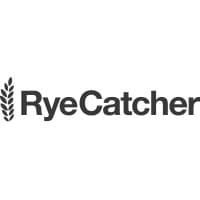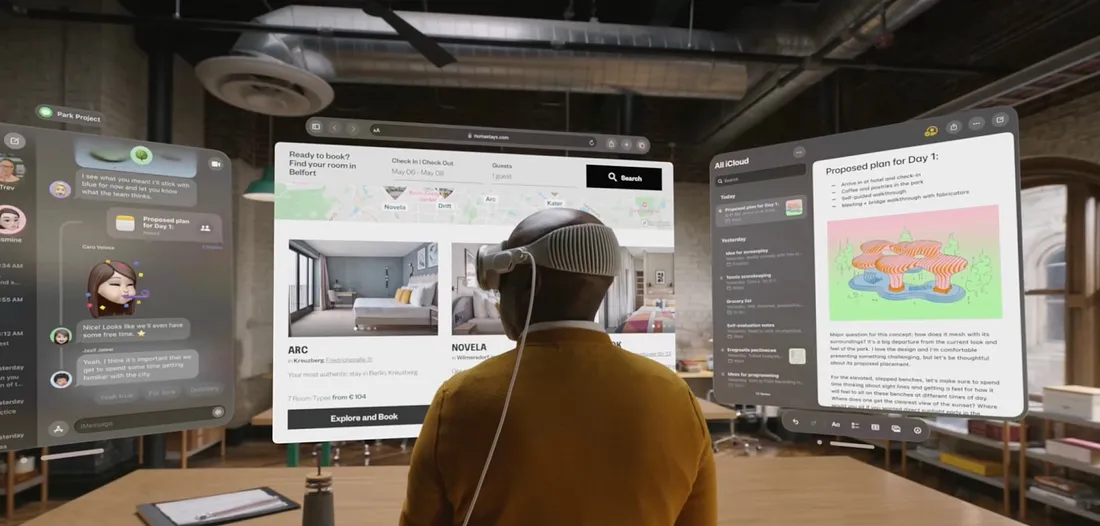

Ryecatcher: From White House Datapalooza to Creating the Student Support System of the Future
RyeCatcher
In 2012, White House CTO Todd Park invited 60 education leaders from public, private, philanthropic, and government communities to answer one question: How can we use data to improve student outcomes?
Teams were asked to leverage openly available, machine readable, and interoperable datasets that could be aligned with student-level data to come up with a prototype that they could present to leaders at the White House. From there, the top ideas could be further developed through private, public, philanthropic or other channels.
One of these teams was led by Arthi Krishnaswami, an information designer and visualization expert. Her concept, a platform code-named RyeCatcher, was inspired by the experiences of special education students and its goal was to create a system that supported students in at-risk environments and their families to find the right services and intervention programs.
Arthi had a clear vision of what she wanted RyeCatcher to become, and what it needed to achieve. She just needed the right partner to help build it—in a scalable and sustainable way.
The challenge
Beyond the typical challenges that every startup faces, such as budget, resources, and time, RyeCatcher had another unique constraint: it needed to work for different states’ educational structures.
The other major consideration was security. It was a top priority for Arthi. “A lot of what we capture in the platform is quite sensitive, so we needed to safely and sustainably scale in a way that protects the integrity of the data for the people who matter the most—the students,” says Arthi.
RyeCatcher chose HFC to help them:
- Build a platform from scratch that supported students, schools, and parents in discovering and accessing services and programs
- Expand on the system with a long-term vision in mind, with features such as permissions, attendance, events, and consent systems
|
“When RyeCatcher came to HFC, all we had were a series of components that were part of a prototype. HFC took that and turned it into an enterprise platform that serves school communities.” — Arthi Krishnaswami, Founder, RyeCatcher |
HFC’s approach
Because Arthi didn’t have a large team, HFC stepped in to fill the gaps, providing frontend, backend, and UI/UX design services.
The team took an iterative approach, adapting and improving the software’s functionality based on user feedback, advances in technology, sustainability, usability, and real-world requirements.
Built for the long term - What HFC originally built was relatively simple by design. There was a “needs mapper,” or questionnaire that parents, students, or teachers could fill out. An algorithm would then map students to different types of programs or support based on the responses to the questionnaire.
As time went on, HFC added more functionality, such as taking attendance, providing a continuous education data record year over year, and permissioning and consent for events. For example, if a student was going on a field trip, teachers could get the parents’ consent for the trip through the platform.
But even though the team took an iterative approach to building the product, they made sure to build with both security and the future in mind, from the very beginning. “HFC incorporated, for example, SSL (Secure Sockets Layer)—which seems like a no-brainer today, but in 2013, SSL wasn’t common in education software, even though it’s critical for data security,” says Arthi.
Data security - Because of the sensitive nature of the data that RyeCatcher contains, HFC designed the platform to limit the amount and types of data that get pulled into the system. For example, it does not collect any PII data or social security numbers, and any data that it contains about a student is stored in separate tables, and only identifiable by student ID. This, along with the fact that names of students are not included in the notes—only initials—makes it relatively easy to anonymize student data.
For the most sensitive data in RyeCatcher, there’s an entirely encrypted area of the system called “My Notes.” Say a social worker meets with a student and has a sensitive conversation with them that requires follow-up and verification. In RyeCatcher, the social worker can simply write, “Student had a sensitive conversation with me in class today, will talk to parent to understand more,” and write a personal memory aid with more details about what was said in the “My Notes” feature. What’s unique about “My Notes” is that it is fully encrypted, even for everyone at RyeCatcher—the only way they can tell that this feature is being used is because they pay for the data storage. “HFC has helped us build this tiered privacy architecture to make sure that we don't ever compromise student data, even unintentionally,” says Arthi.
A specialized AI insights engine (in progress) - One of the most exciting features that HFC is building into RyeCatcher is an AI engine that’s trained specifically on RyeCatcher’s needs mapper data over the last 10 years. This will allow caseworkers to ask questions like, “What's the most common type of note?” and “What are the age ranges where certain types of behaviors happen?” and help them as they work with students with a wide range of different needs.
Technical elements - In the very beginning, to make RyeCatcher’s stack as modern and efficient as possible—with limited resources—HFC built the APIs using Ruby on Rails and developed the frontend with an Angular tech stack. This combination facilitated the loading of large data sets into the user interface effectively.
Fast forward five years, and RyeCatcher’s stack needed to evolve. Due to limited budget, HFC containerized the stack to ensure consistent environments, simplify deployment, and improve scalability and maintenance. This approach helped RyeCatcher avoid expensive upgrades while still being able to deploy the necessary updates.
|
“HFC really thinks ahead to make sure the software will work long term. It may take a bit more work in the beginning, but 10 years later, your tech will still be running.” — Arthi Krishnaswami, Founder, RyeCatcher |
The results: A platform that’s “changed the way schools operate”
Since its original launch in the 2014–15 school year, in schools across four states, RyeCatcher now provides tools to support the full ecosystem of school professionals and social workers using the platform.
HFC designed and developed an identity and access management architecture for the platform with permissions for 11 types of users—the only one of its kind—designed to solve for the complexity of in- and out-of-school providers, and the strict data privacy requirements for this environment.
“There are other similar products today, but none that do it as comprehensively as what HFC has built,” says Arthi. “It’s changed the way schools operate, and built a new standardized way for how teachers and parents should be thinking and communicating with each other in terms of sprint, growth, and feedback.”
Just a few of the outcomes of RyeCatcher’s partnership with HFC:
- A platform that annually serves over 2,000 users, 16,000 students, and 38 schools
- An estimated 4–6 hours saved per week for 47% of pilot users
- A platform that makes it easier to coordinate programs and services on behalf of students, facilitates communication between parents and teachers, and improves school team responsiveness
- Successfully patented RyeCatcher in the US, Singapore, and Canada (a rare feat for software)
What began as a prototype in response to the task set out by the White House has, after many years of user research and refinement, evolved into a platform that’s used by schools today to create a community of support for every student.
RyeCatcher has just celebrated its 10-year anniversary and with an eye to the future, Arthi is looking to scale up, bringing RyeCatcher to schools across more states in order to provide students with the services and support systems they need to succeed.
Looking to build social innovation products with complex privacy and data handling requirements?
Web
User Experience Design
Product Accelerator
New Products
Strategy
Data Security
Generative AI
From Our Blog
The case for Vision Pro’s success — and the need for more thoughtful app design in a world of immersive tech
Last week, Apple announced the Vision Pro — the long-rumored mixed reality headset that had been gestating since the mid-2010s...
Learn More
Let's build something amazing
When you reach out to us, our senior staff are here to help learn more about your needs and hand-pick a team that you'll love.
